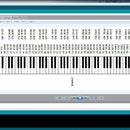Introduction: Building Your Very Own Nixie Clock HW and SW
In this instructable we will be building a custom Nixie Tube Clock. Big thanks to JLC PCB for sponsoring this project. We will go from building the custom circuit board to 3D Printing the Case and coding the software to run it.
Free Shipping on First Order & $2 PCB Prototyping on https://jlcpcb.com
The Bill of Materials are as follows:
Nixie Tubes IN-14 tubes found on Ebay
Power supply
Atmega328p-pu chips
Other Pieces can be found at the github link:
Step 1: Connect the High Voltage Power Supply
First you need to connect the High Voltage Power supply.
Before connecting to the clock we will make sure that you have set the voltage for 130V DC via the Pot on the power board with an input voltage of 12VDC from a power supply or spare 12V power pack.
Once the output is set you will connect with hookup wire the power supply to the board. Markings are on the silkscreen
Step 2: Flash the Code
You will need to flash the code to the boot loader. First you will need to re-flash the boot loader with the internal 8Mhz clock from the following link:
Arduino to Breadboard
https://www.arduino.cc/en/Tutorial/ArduinoToBreadb...
Once you have flashed the 8Mhz internal clock bootloader onto the chip you can connect it as shown in the image above and then program your atmega328p-pu chip with the software found at the github link below:
Step 3: 3D Print Parts and Connect Boards
Next you will need to 3D Print all the parts out from thingiverse or github repo. Once they are printed you will use M3 screws to attach the power supply board to the bottom standoffs and then attach the main PCB to the taller standoffs.
Step 4: Install Long Inserts
You can print out whatever color you would like for this build. I chose black and white. Thus, when I installed the inserts into the grooves I alternated colors. These will simply stack on top of each other while they slide into the grooves that are in the base corner pols.
Step 5: Install Buttons and Back Plate
First you will install the buttons into the back plate and then you will slide the back plate into the grooves in the back of the base. The buttons should line up directly with the tactile buttons on the circuit board.
Step 6: Install the Top
Finally now you will simply install the top. This will be installed with four screws into the corner posts.
Step 7: Final Thoughts
Finally you should have a working Nixie Clock. Please watch the video of this to get a better understanding of how it all comes together and subscribe while you are there so you don't miss any other great projects.
Try Amazon Prime 30-Days
https://www.amazon.com/tryprimefree?ref_=assoc_tag...
Check out the Channel Store https://www.tindie.com/stores/misperry/
Checkout the Forum!! https://groups.google.com/forum/#!forum/misperry
Support the channel tip with bitcoins Address: 1MvcZHRbDm9czS8s776iutBBPJ39K4PEHh
Follow me on YouTube https://www.youtube.com/misperry
Follow me on Facebook https://www.facebook.com/misperryee/
Follow me on Twitter http://www.twitter.com/misperryee
T-Shirts http://www.zazzle.com/misperry






